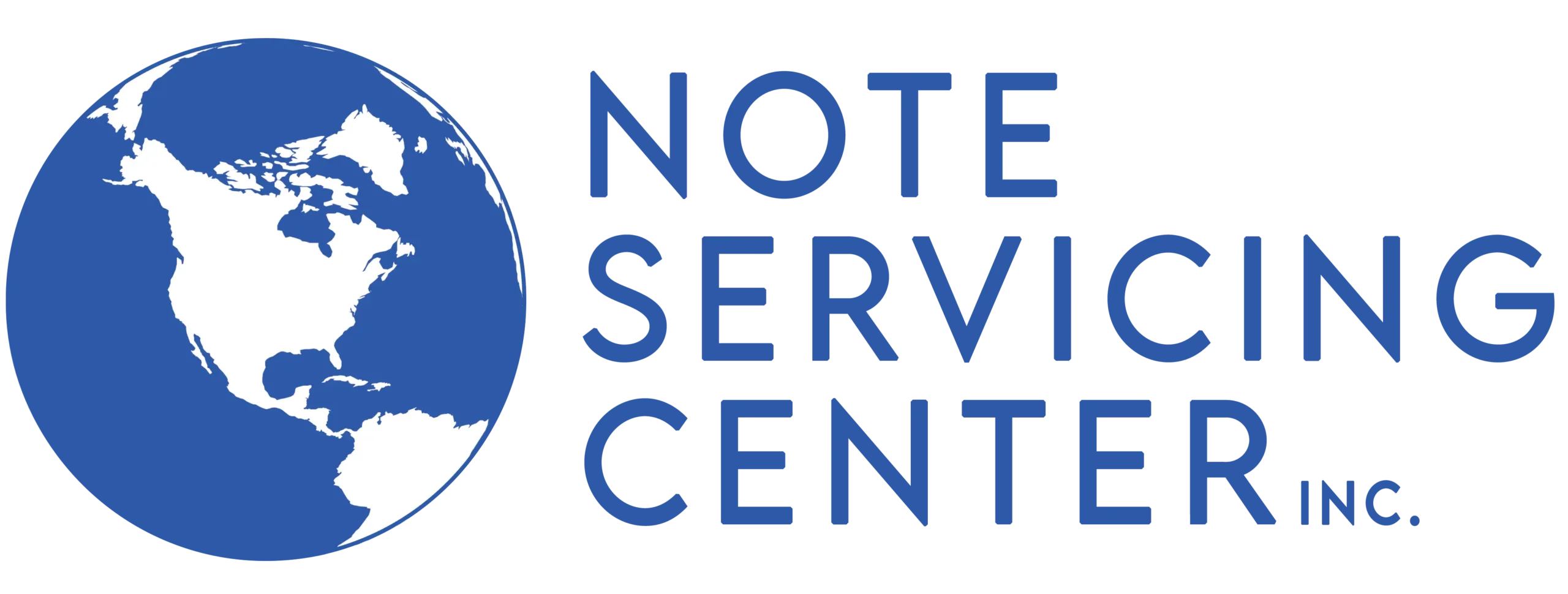The natural progression of things often leads to cash flow brokers becoming cash flow buyers, if only so that they can have a small investment to meet their retirement needs or to provide a steady income. In those cases where investors move from buying for their own portfolio to becoming legitimate funding sources, they quickly learn that there is this place called the “back office” where a lot of paperwork and record keeping must be done just to maintain their portfolio.
Before they know it, these would be funding sources are seeing their profits eaten up in the cost of hiring personnel to take care of the mundane record keeping. They are no longer one-person operations; they have employees.
The overhead – the cost of business – continues to grow. Yes, so does the business, but what if it didn’t? What if there was only enough money coming in to cover the overhead or, worse, not enough money coming in to cover the overhead.
Some small buyers of collateral-based income streams that grew quickly through the 1990s found themselves in just that kind of situation at the turn of the century and had to quickly “downsize” because they couldn’t afford the overhead costs that had once seemed so necessary.
It’s quite possible that Note Servicing Center, a company started several years ago by Roberta and Thomas Standen, could have solved some of the problems those companies were facing. Certainly they are available to prevent current and future investors from getting in the overhead trap.
Note Servicing Center is a back office, at least for the buyers who need to maintain a portfolio but don’t want to do it themselves and don’t want to have to hire someone else to do it.
Bill Tan, president of the San Diego Chapter of ACFA, told the Standen’s to get in touch with the association, because he could see where association members could benefit from the company’s services.
“We met Bill Tan at the National Council of Exchangors conventions,” explains Roberta Standen, president of the company. “I have been a real estate exchangor since 1977.” And he said, “You folks really need to get involved with the American Cash Flow Institute. All these cash flows need to be serviced and maybe you can help some of these people in their note servicing, contract servicing, business note servicing, and things like this, because during a recession or any time when people want to save money, they start doing some outsourcing.”
We not only service one or two accounts for three or four for individual beneficiaries, but also we do outsourcing for companies that have cash flows whether they be notes or other things.
Roberta says Tan could see where the Standen’s should, “get involved with these people because they could save some money by giving that task to you (NSC), kind of like a Back Office. it will save them money with computer hardware, software, personnel training, personnel overtime, and all the overhead that goes with having personnel. They can outsource to you and make an incredible savings.”
The Standen’s were at San Diego, behind the scenes, and will be attending Cash Flow 2002 as Exhibitors and speakers. Tom Standen, the CEO of the company, will be inducted into the Million Dollar Club at Chicago. “We have a little private mortgage pool, and (Tom) originated difficult loans on hard-to-finance properties, particularly in this subdivision area for infrastructure and so forth for many years. He has a background as a real estate mortgage loan broker and we’ve done some mortgage banking and he put together the Trustees Mortgage Association,” says Roberta, Tom’s self-described public relations person.
“He is the visionary for this company and I do his promotion and marketing and so forth, but he’ll be able to tell you what we can do for your members, which is a lot,” says Roberta.
Tom’s explanation of what Note Servicing Center does is simple: “We step into the shoes of the person who is to receive money, and we take care of everything that that person should be taking care of.”
In more complicated terms, NSC does the following:
Provides payment processing including coupons and envelopes to the payor.
Collects payments owed to the note holder every month
Processes payments daily
Deposits funds promptly into the note holder’s bank account or wherever the note holder wants the money deposited
Provides the note holder with monthly statements
Keeps an accurate record of every payment made and every disbursement
Sends delinquency and late notices, according to state laws
Notifies payors when balloon payments are due
Provides year-end financial accounting required for IRS (1098 and 1099)
Monitors payments for taxes and insurance
Prepares a payment history upon request
Handles tax and insurance impounds (escrows)
Pays all postage and telephone calls
Offers electronic debit of monthly payment from borrower’s account (with authorization by borrower) for a small charge.
Makes Automatic Direct Deposit into note holders’ accounts
Impounds taxes and insurance into sellers reserve account
Documents custodial service (i.e., keeps thorough paper trail of activities in accounts
And the company does all this for every note it maintains for a fee of $10 per month. That’s ten dollars in case you thought there might be a zero missing. While Note Servicing is not a collection agency, it does do quite a bit of work before it might be necessary to get a collection agency involved.
“We can enforce the provisions of the agreement, whether it’s a note or consumer’s note or any of those kinds of things, “Tom explains. “If there’s a late charge provision written into the agreement, we enforce it. If it’s supposed to have a 10-day late charge, we enforce it. If the check gets here on the 11th day, they get hit with a late charge. It’s automatic. There is no discussion about it. It’s just done.”
Explaining the process in more detail, Tom says, “If the payor doesn’t make his payment, we send out late notices 10 days, and 20 days, 30 days, 40 days. The late notices start out being nice, and then they’re almost nice, and then they’re not nice, and then they’re horrible. And of course we notify the beneficiary (note holder) of the loan once it’s 31 days late. We notify the beneficiary that it’s two payments late,, and he should seriously considered taking actions to enforce the terms of the note. We can’t do that because we service all over the country, and there are different rules in every state, so we don’t know what the rules are in every state. But we keep the lender on notice as to what’s going on with his account.”
The balloon payment notification, a common element of many privately financed notes, is also critical because of state requirements. “We send balloon payment notifications. We send a notification to the borrower not less than 90 days nor more than 150 days before that note is due, notifying them when it is due and the approximate amount that will be due. They have that in some states that it is a requirement. In California that is a requirement; you cannot enforce your balloon payment unless you have that notification sent. . . . That’s all statutory kind of stuff. And we comply with those things.”
How does Standen do all these things without the huge staff that people who outsource these tasks might have to hire? “Our software cost me $25,000 so it’s not a cheap package,” he explains. “And it costs me one percent a month to maintain it. So it gets pretty expensive.”
What about property taxes not being paid? “We try and get the lender at the time the loan is put together to obtain a tax service through the company that issued the title insurance policy so that we can be notified if the taxes are not paid, and that costs anywhere from $65-75, depending on which company they do it with, and it’s for the life of the loan. So what happens is, if the payor doesn’t pay his taxes, we get notified. That’s a default provisions under the note, and we send a nice letter first, and the second one is not as nice, and the third one is worse and by then we are in contact with the beneficiary saying, “you need to do something about this.”
Tom has found a way to deal with what he calls the “recalcitrant borrower” that often eliminates the necessity of the note holder facing foreclosure proceedings and other problems. “You can break a borrower from sucking eggs by filing a notice of default. If you are 31 days late and I file on you, and you’ve got sufficient equity in that property, you’re not going to let the lender take the property. It’s going to cost you about $1,000 every time I file a notice of default.”
To cure it, and pay the cost to the title company, or to the attorney or whoever does the filing – you’ve got to cure that and bring it all current. And after they’ve done that three or four times, I make sure I get my payments on time. I tend to become less than nice speaking to borrowers who give me those kinds of fits.
The first time I have to do it, it’s excusable. I can understand that. Things like that have happened to me, but I have to get higher on your priority. I want to be number one on who gets paid. So when you get your check every month, I want my check. If I don’t get my check, I’m going to file a notice of default and you need to know that. And after I do it two or three times, you’ll know that I mean that.”
The key to Standen’s being about to provide all the services he does for what is essentially a nominal fee is the proprietary software he has had designed for his business. “The cost is $15 a month for each note. I don’t care how big the note is. That doesn’t make any difference. If we have a late charge and the late charge comes in, we split it with the lender because of the additional things we have to do, but beyond that there is nothing. There is no charge for the electronic stuff. There’s no charge for the checks. It’s just a straight $15 a month. . . .
“We haven’t found a loan yet (including fractionalized notes) that we haven’t been able to service. Some of them I really scratched my head on, but we’ve been able to do it. The software that we’re using is really fantastic. I don’t know how many thousand of lines of programming that are in there but there’s a lot.”
It’s proprietary. We got an upgrade working on it right now. We just had finished doing all the 1098s and 1099s. I had to prepare that form for IRS, and I told our programmer, “How come this thing doesn’t total the amount of interest?” We know how many 1098s because it gives us a total of the 1098s. There are about 2,500 of them. But it doesn’t total dollar amount.” The programmer has given him a patch to fix the problem and is in the process of permanently upgrading the software. Tom says that’s the way it goes. He tells the programmer what he wants the software to do, and the programmer tells the software how to do it. And he just recently made it possible for both borrowers and lenders to go online to track their notes.
If interested, contact NSC at: Note Servicing Center, 3275 E Robertson Blvd, Ste. B, Chowchilla, CA 93610, phone: (559) 665-3456, Fax: (559) 665-3457, www.noteservicingcenter.com






